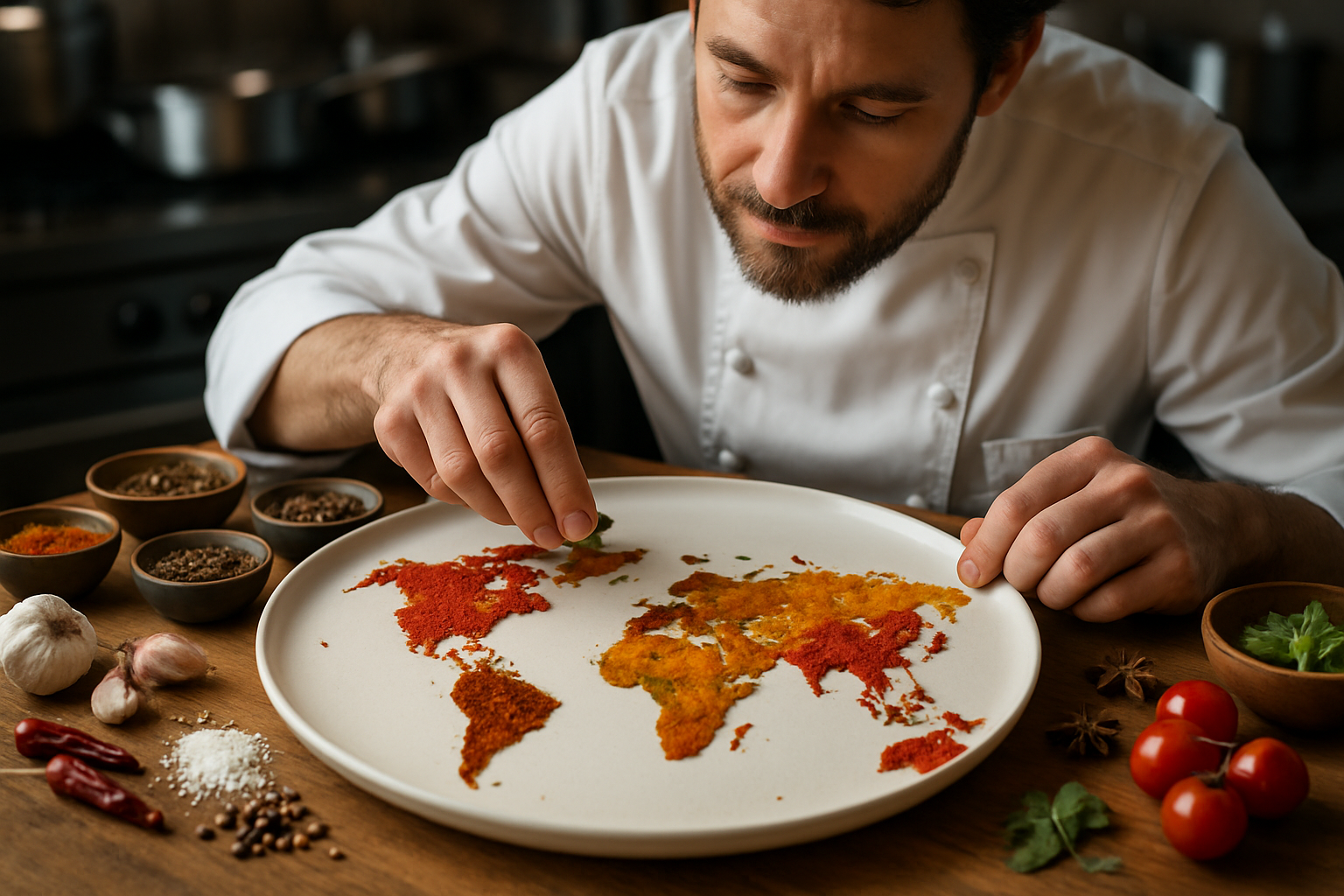Culinary Alchemy: Transforming Everyday Ingredients
Prepare to embark on a gastronomic journey that will revolutionize your kitchen game. Culinary alchemy is the art of transforming ordinary ingredients into extraordinary dishes, elevating the mundane to the magical. This exciting approach to cooking unlocks hidden flavors, textures, and possibilities, turning your kitchen into a laboratory of delicious experimentation.

Unexpected Pairings: The New Flavor Frontiers
Breaking free from traditional flavor combinations is a hallmark of culinary alchemy. By pairing seemingly disparate ingredients, innovative chefs are creating taste sensations that challenge and delight the palate. Imagine the bright acidity of strawberries complementing the earthy richness of roasted beets, or the umami depth of miso enhancing the sweetness of caramel. These unexpected unions are not just about shock value; they’re about discovering harmonies that have always existed but remained unexplored. Home cooks can start small by adding a pinch of salt to chocolate desserts or a drizzle of honey to savory dishes. As confidence grows, more daring combinations can be attempted, such as incorporating lavender into savory rubs or infusing olive oil with coffee for a unique finishing touch on grilled meats.
Texture Play: Reimagining Food Forms
Texture is an often-overlooked aspect of culinary alchemy, but it plays a crucial role in how we experience food. Innovative chefs are pushing the boundaries of texture, transforming liquids into solids, solids into foams, and creating multi-textural experiences within a single dish. Molecular gastronomy techniques, once the domain of high-end restaurants, are becoming more accessible to home cooks. Simple tools like an immersion blender can create light, airy foams from fruit juices or vegetable purees. Experimenting with different forms of the same ingredient—such as serving carrots raw, roasted, pureed, and as a crisp—can create a symphony of textures that elevate a dish from ordinary to extraordinary. Even basic ingredients like rice can be transformed into crunchy crackers or creamy risotto, showcasing the versatility of texture in culinary alchemy.
The Alchemy of Preservation
Preservation techniques are not just about extending shelf life; they’re powerful tools in the culinary alchemist’s arsenal for transforming flavors and textures. Fermentation, pickling, and curing can turn humble vegetables into complex, tangy delights or transform meats into savory charcuterie. These ancient methods are experiencing a renaissance in modern kitchens, with home cooks experimenting with everything from homemade kimchi to lacto-fermented hot sauces. The beauty of preservation lies in its ability to not only change the character of an ingredient but also to capture and intensify its essence. A simple cucumber becomes a crunchy, garlicky pickle, while cabbage transforms into the complex, probiotic-rich sauerkraut. By mastering these techniques, home cooks can create a pantry full of flavor bombs ready to elevate any meal.
Waste Not, Want Not: Transforming Kitchen Scraps
True culinary alchemy extends beyond the main ingredients to embrace every part of the food we use. Innovative chefs are finding ways to transform what was once considered waste into delicious and nutritious components of meals. Carrot tops become vibrant pestos, citrus peels are candied for garnishes or infused into oils, and vegetable scraps are transformed into rich, flavorful stocks. This approach not only reduces food waste but also adds layers of flavor and nutrition to dishes. Home cooks can start by saving vegetable trimmings in the freezer for stock, or by experimenting with using herb stems in sauces and marinades. The leaves of root vegetables like beets and radishes can be sautéed or added to salads, while bread ends can be transformed into croutons or breadcrumbs. By viewing every part of an ingredient as potential, culinary alchemists create more sustainable and creative kitchens.
Tips for Aspiring Culinary Alchemists
-
Start with familiar ingredients and gradually introduce new techniques or pairings
-
Keep a flavor journal to document your experiments and discoveries
-
Invest in a few key tools like an immersion blender, dehydrator, or sous vide machine to expand your alchemical possibilities
-
Don’t be afraid of failure; some of the best culinary innovations come from unexpected results
-
Learn the basic principles of flavor balancing: sweet, salty, sour, bitter, and umami
-
Experiment with different cooking methods for the same ingredient to understand how heat transforms flavor and texture
-
Challenge yourself to create dishes using only what’s in your pantry or fridge
-
Attend workshops or watch online tutorials to learn new techniques from experienced chefs
-
Collaborate with other food enthusiasts to share ideas and inspirations
In conclusion, culinary alchemy is more than just cooking; it’s a mindset that approaches ingredients with curiosity and creativity. By embracing these transformative techniques, home cooks can elevate their everyday meals into extraordinary culinary experiences. The kitchen becomes a playground for experimentation, where familiar ingredients reveal new facets and unexpected combinations lead to delightful discoveries. As you embark on your own alchemical adventures, remember that the most important ingredient is your willingness to explore, experiment, and sometimes fail. With practice and patience, you’ll develop the skills to turn the ordinary into the extraordinary, one dish at a time.





